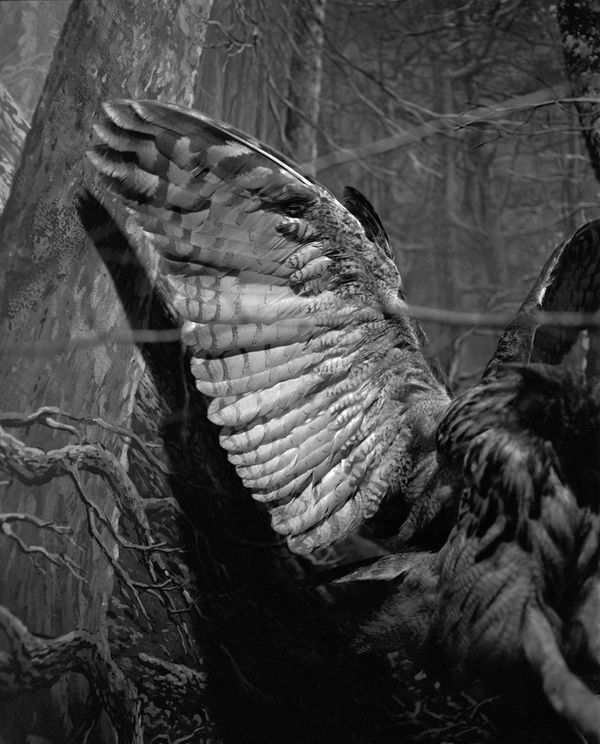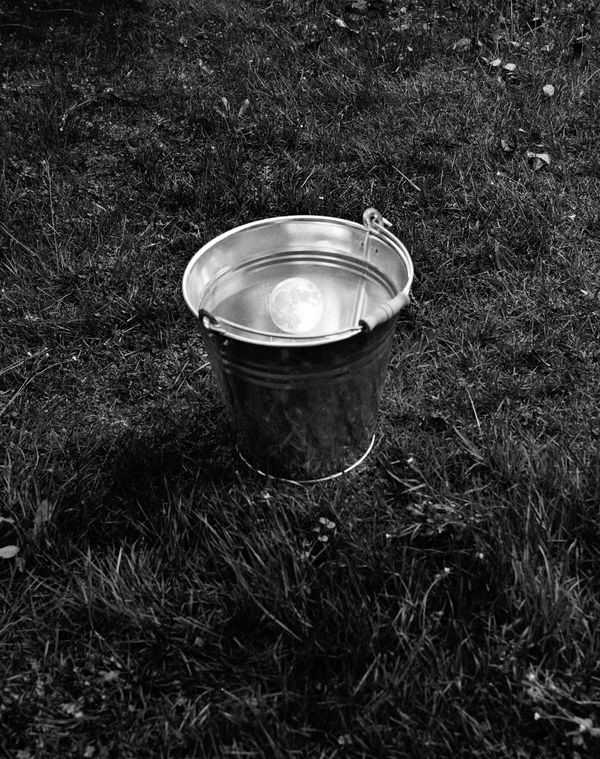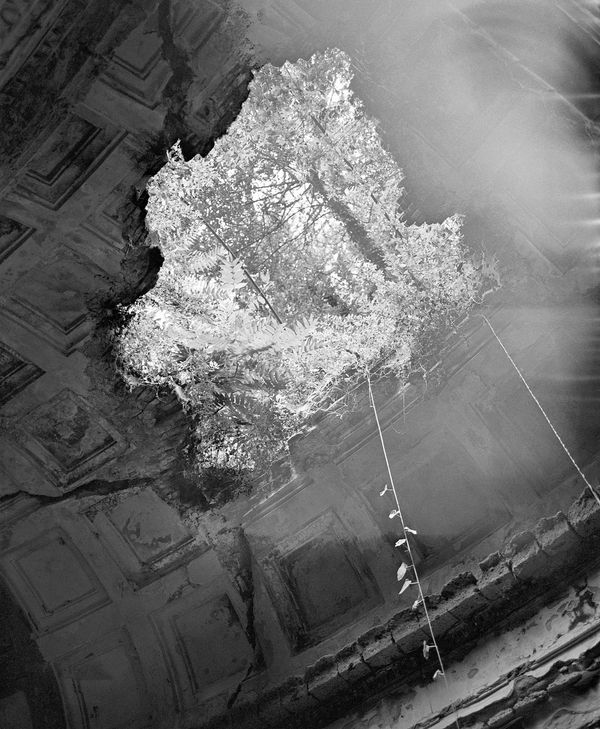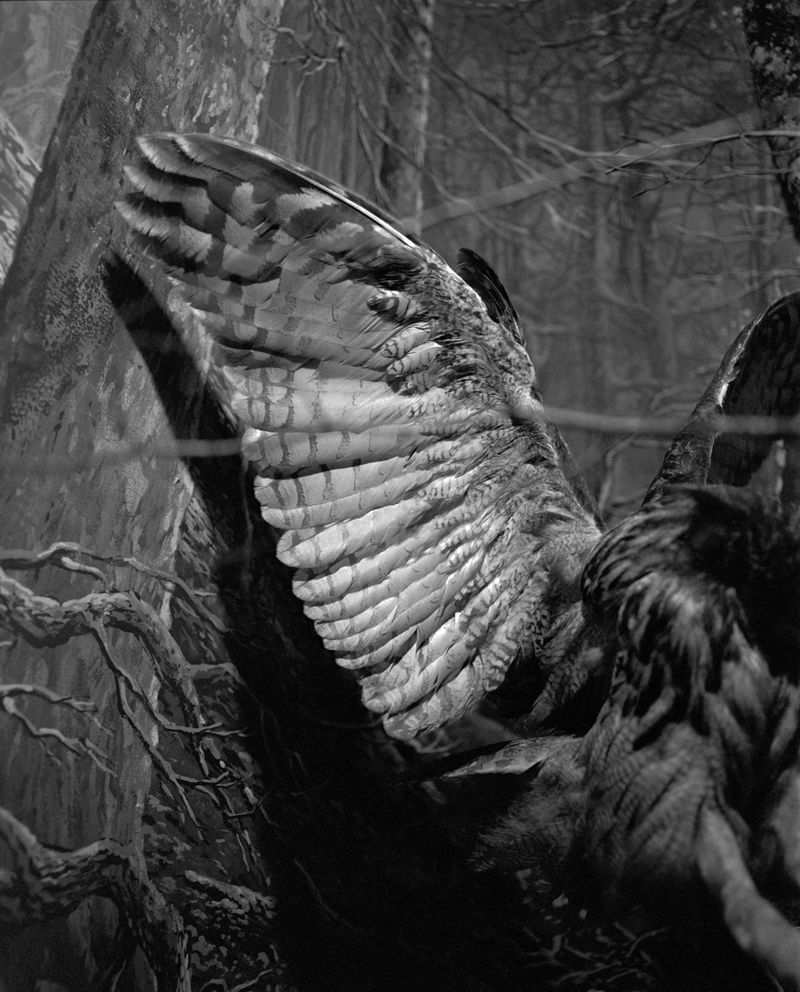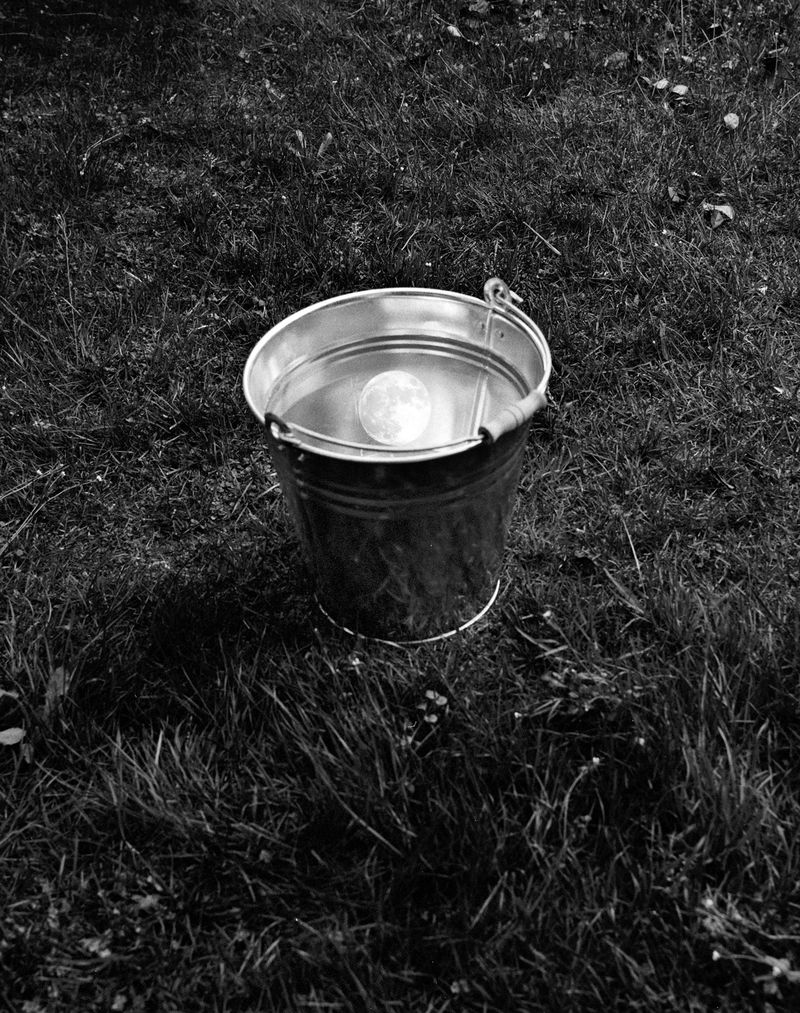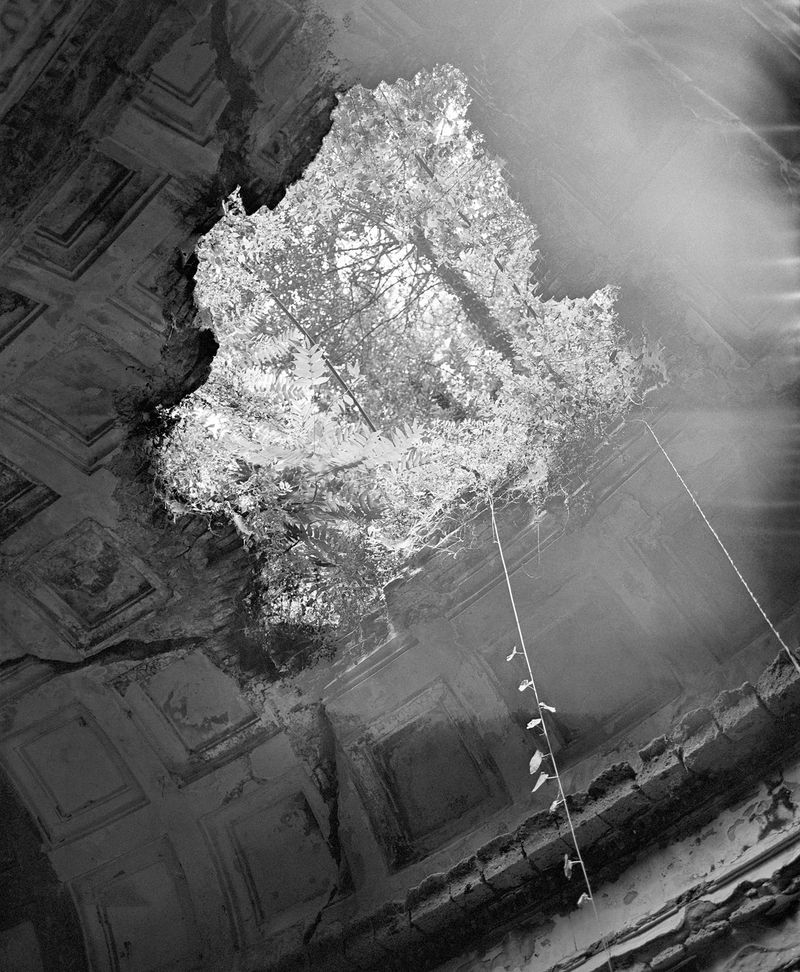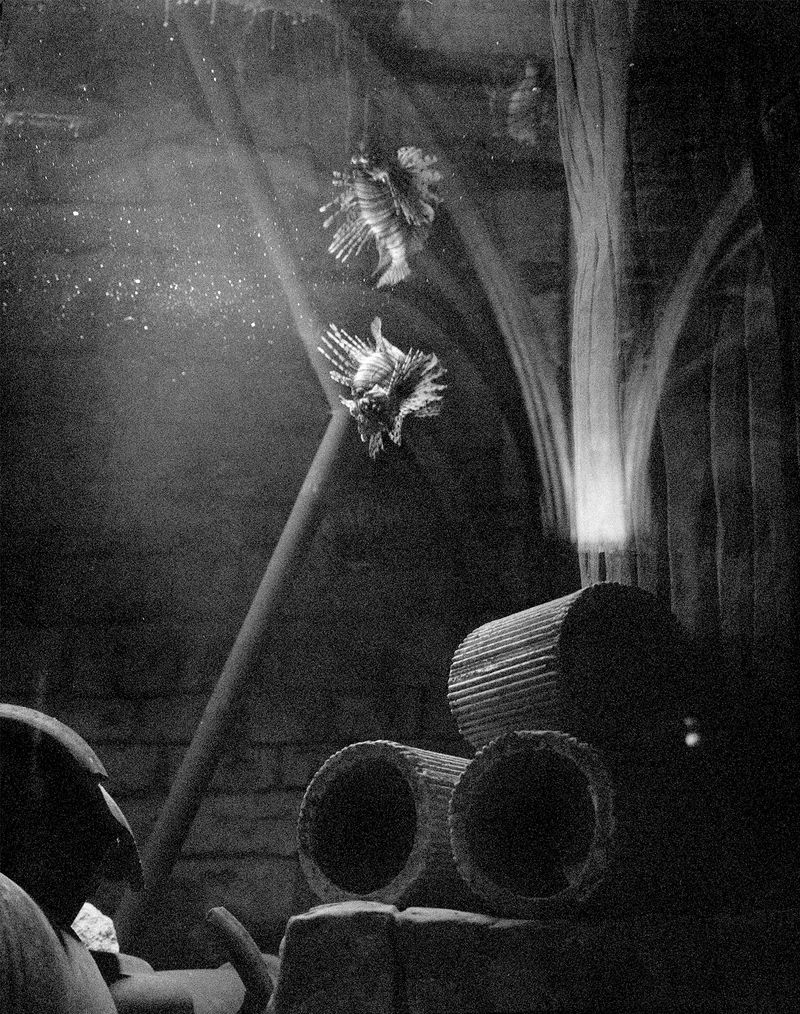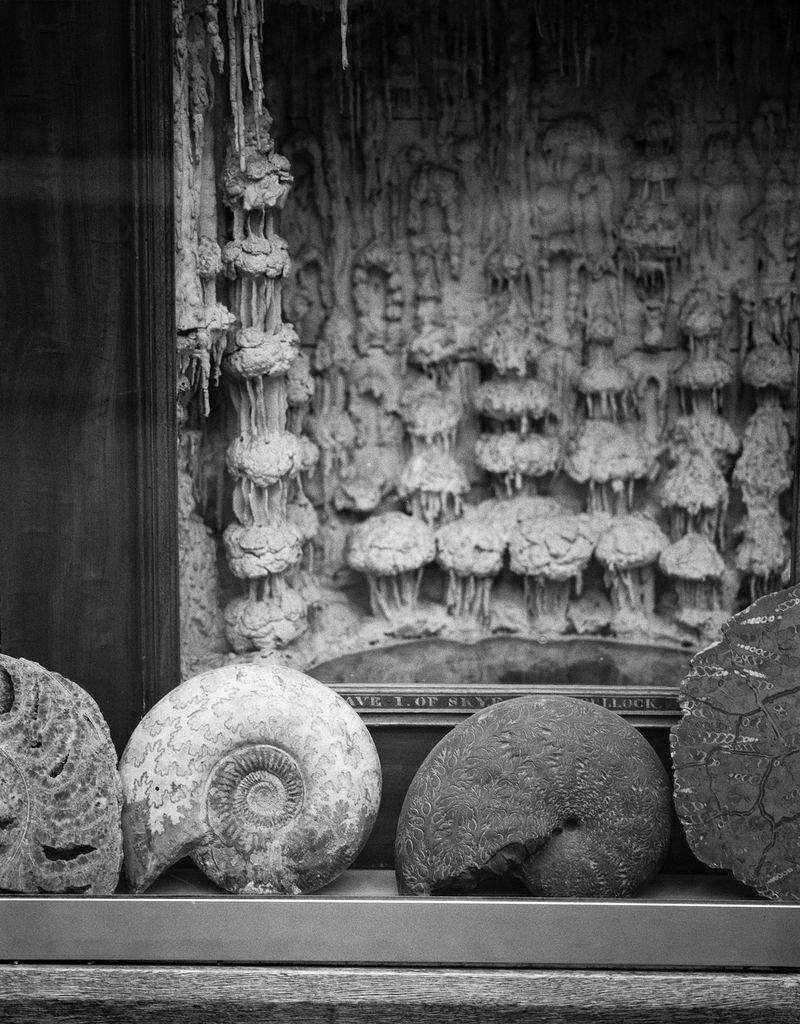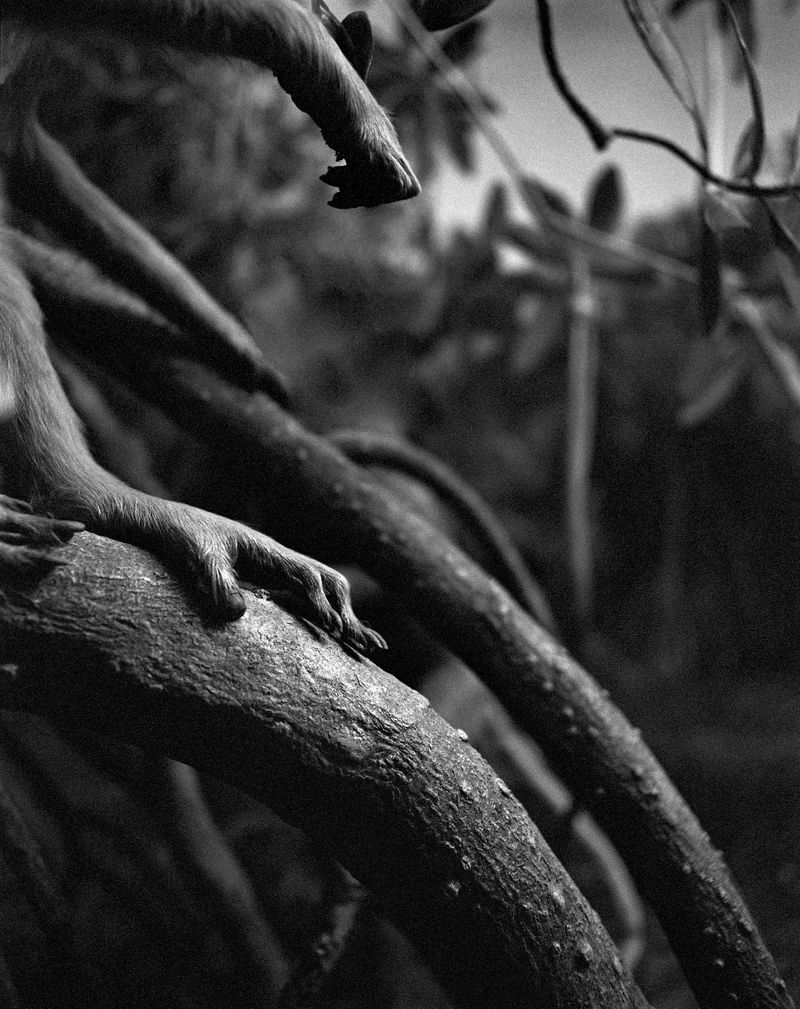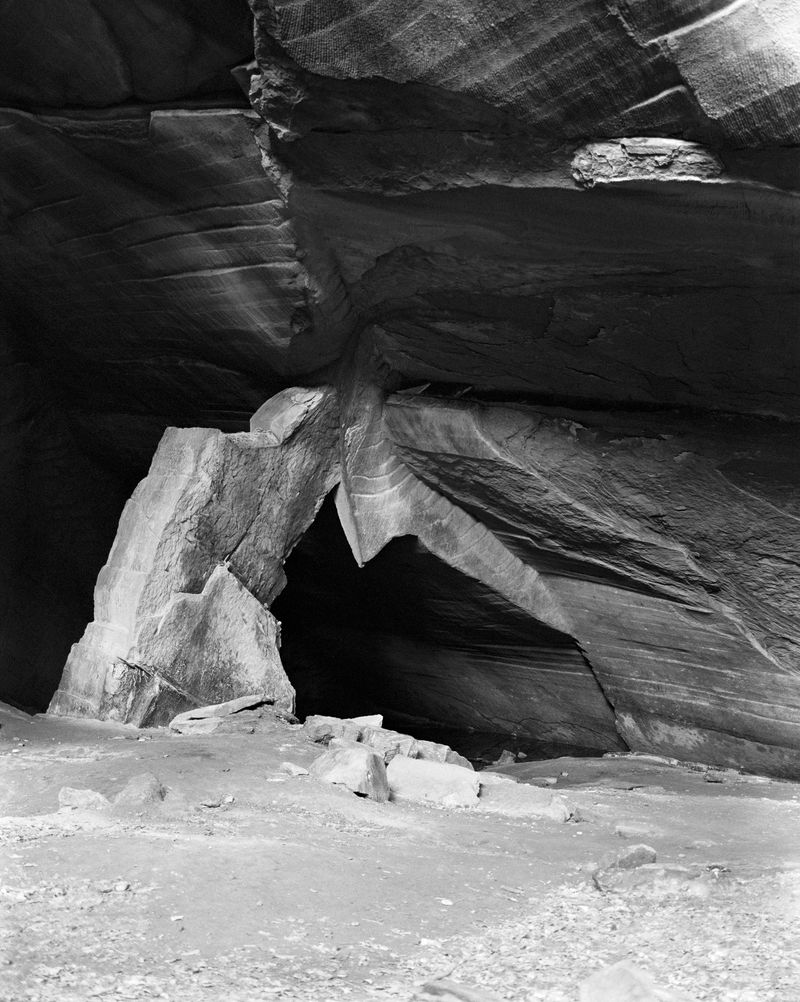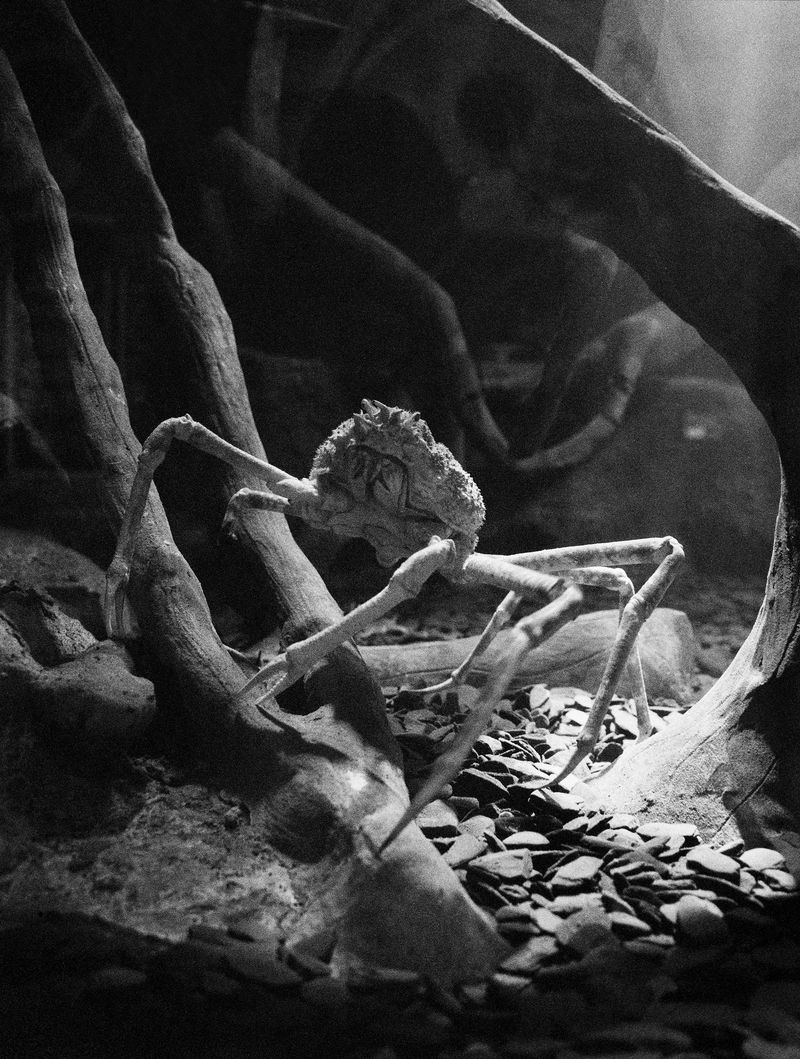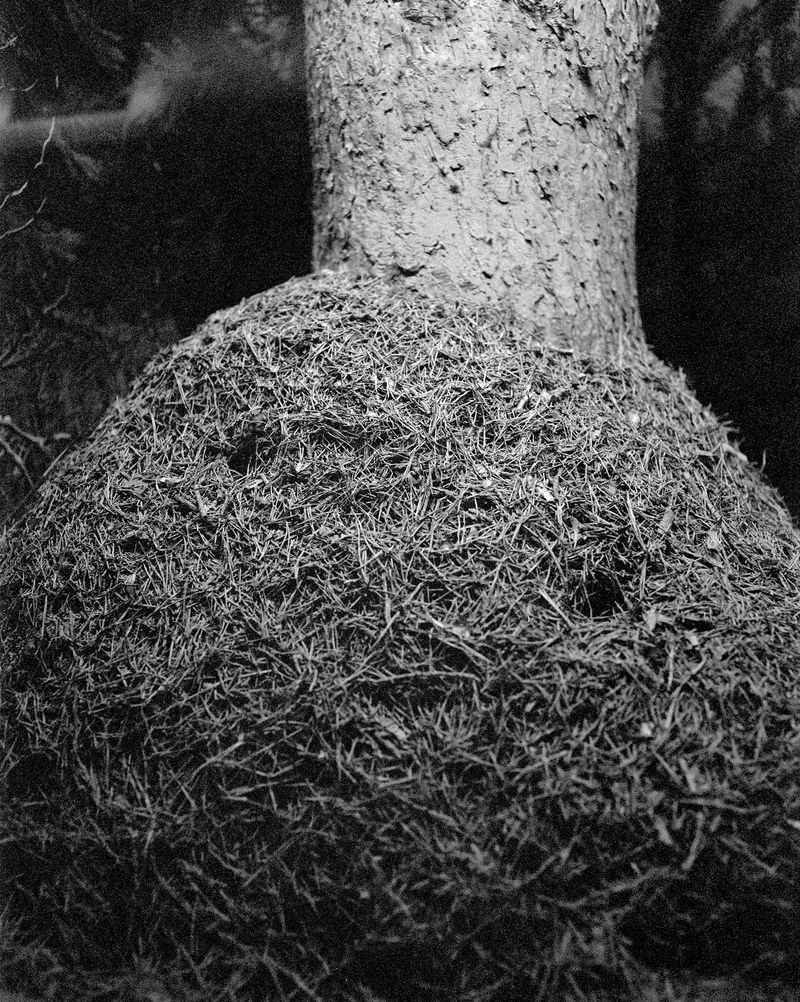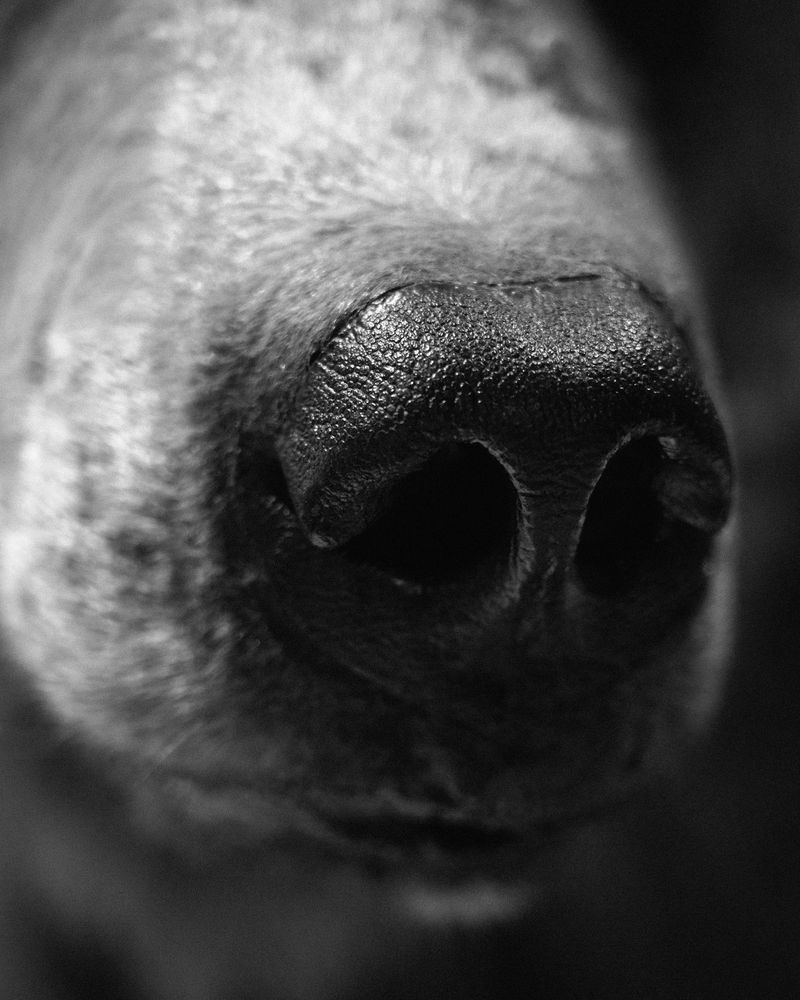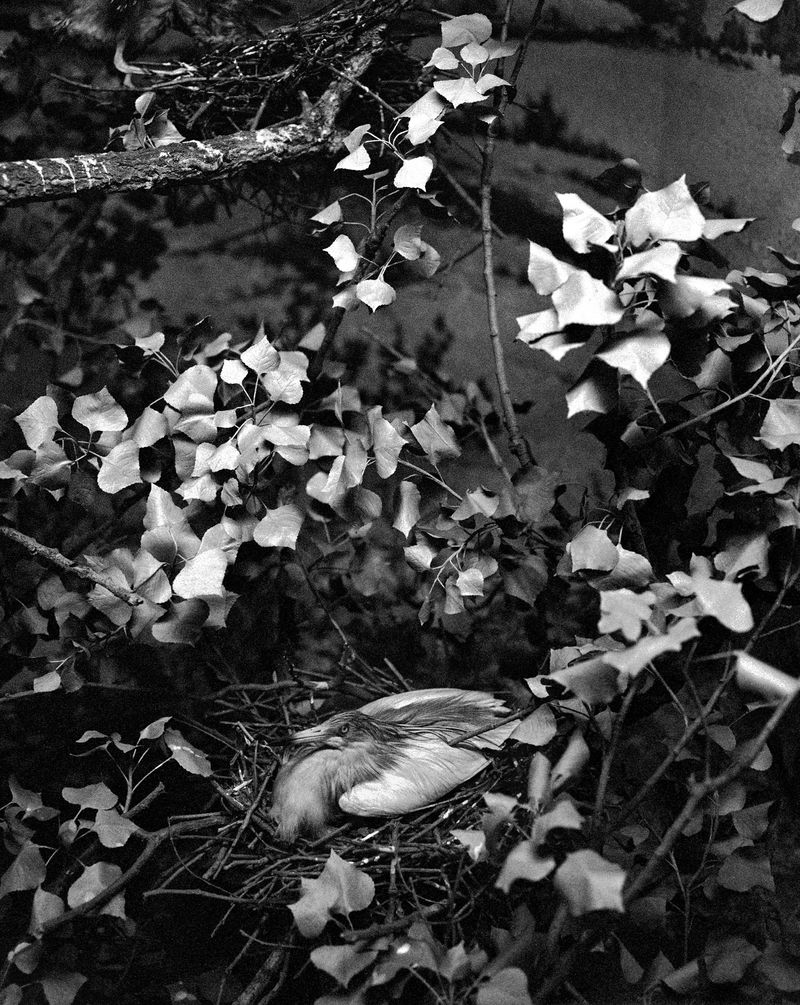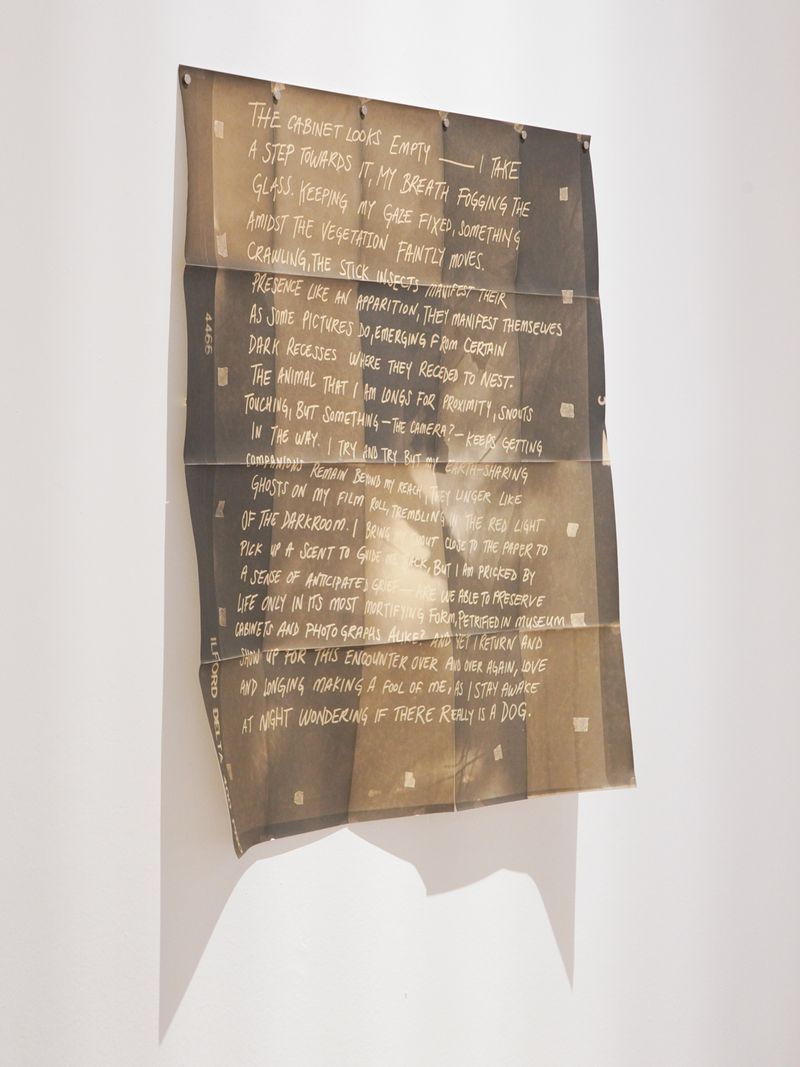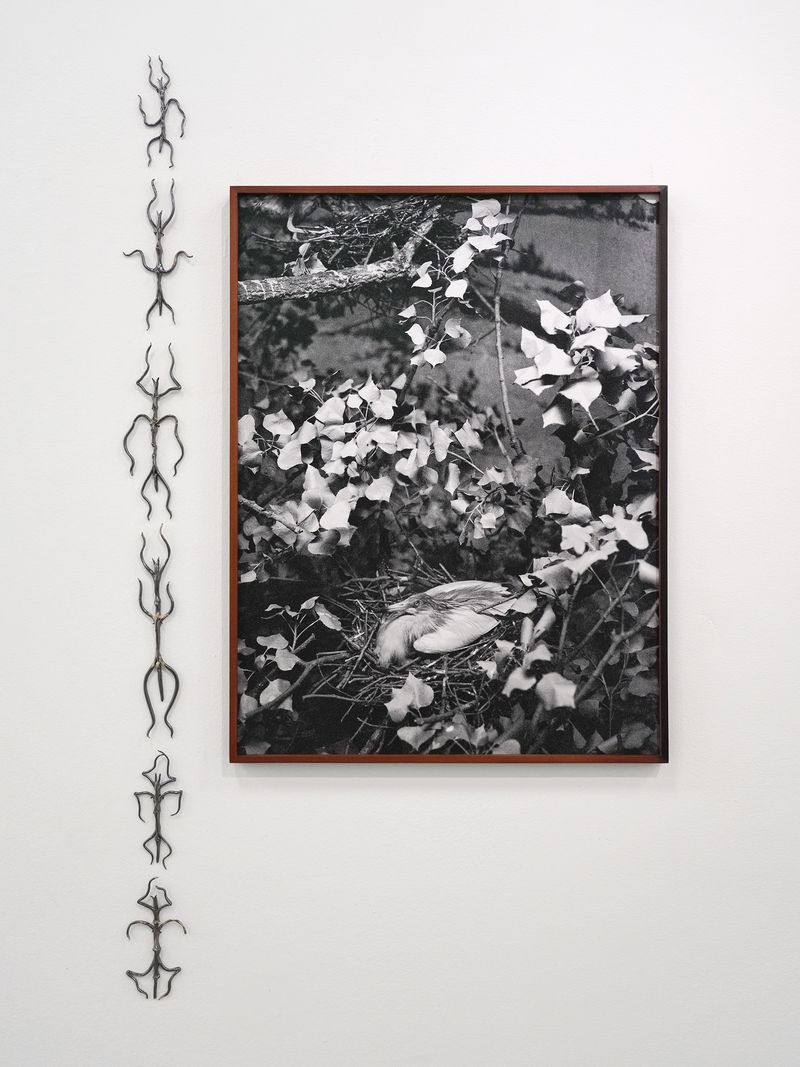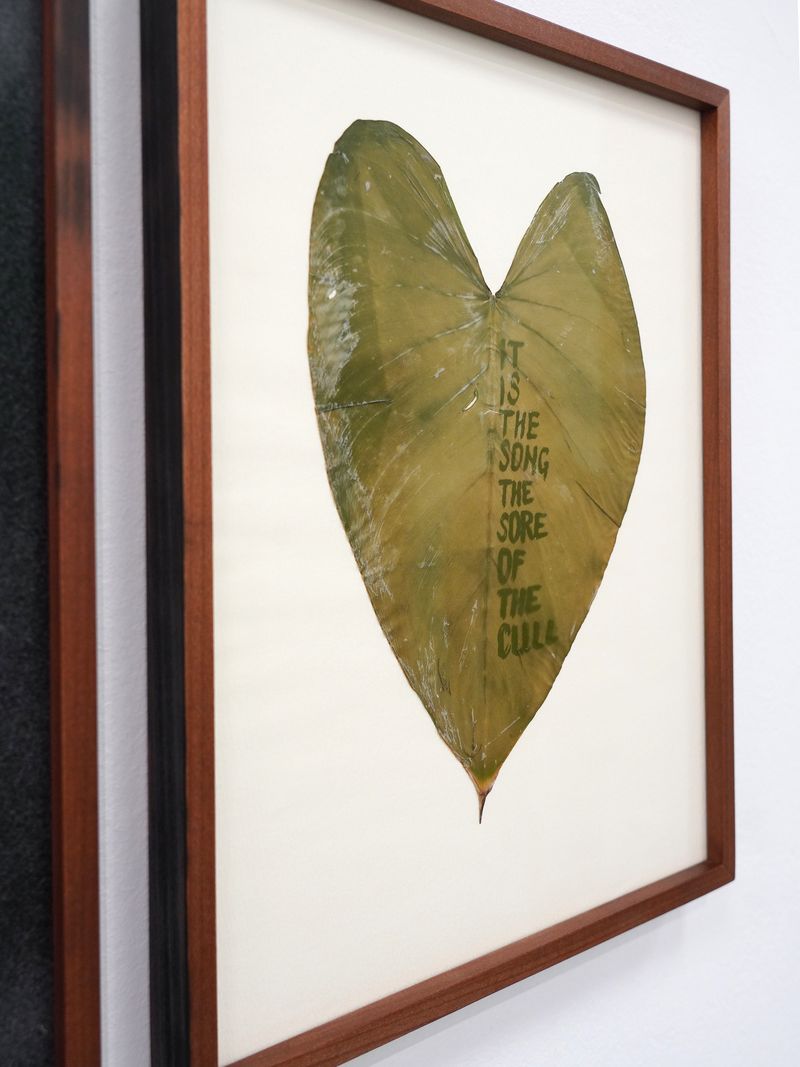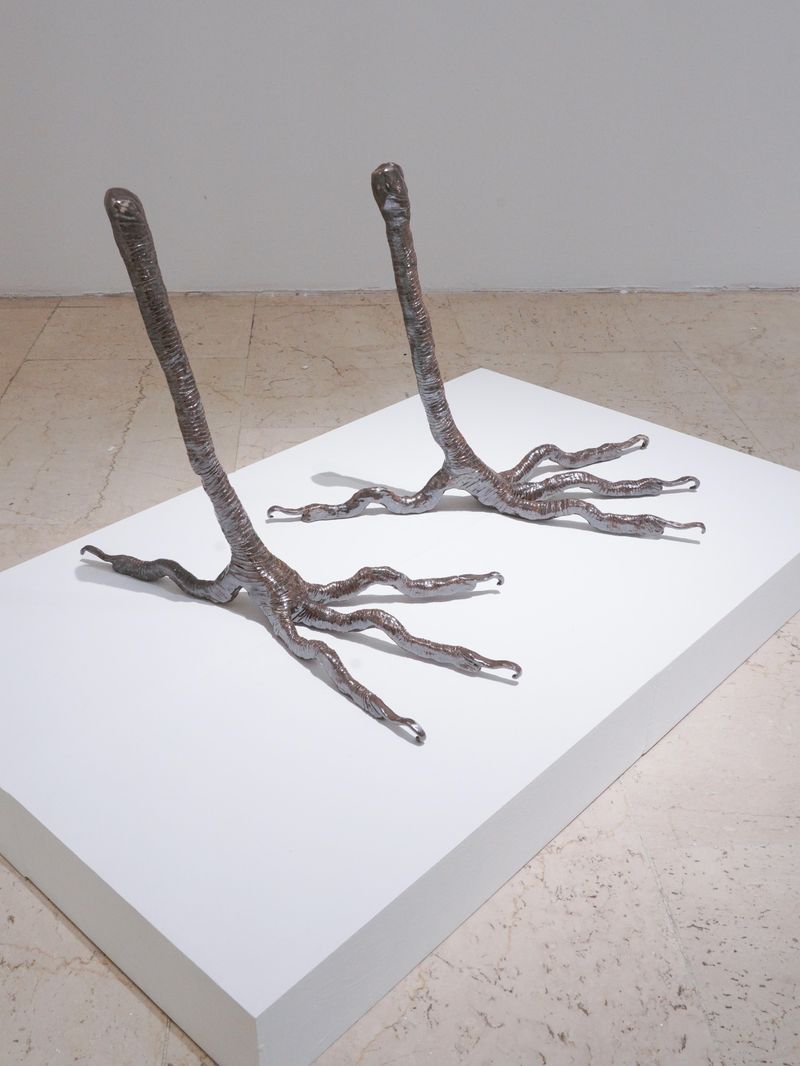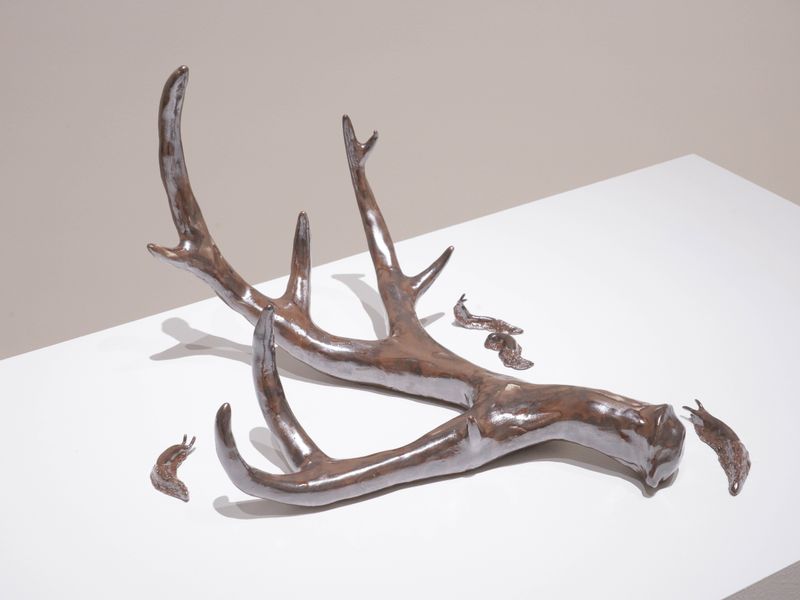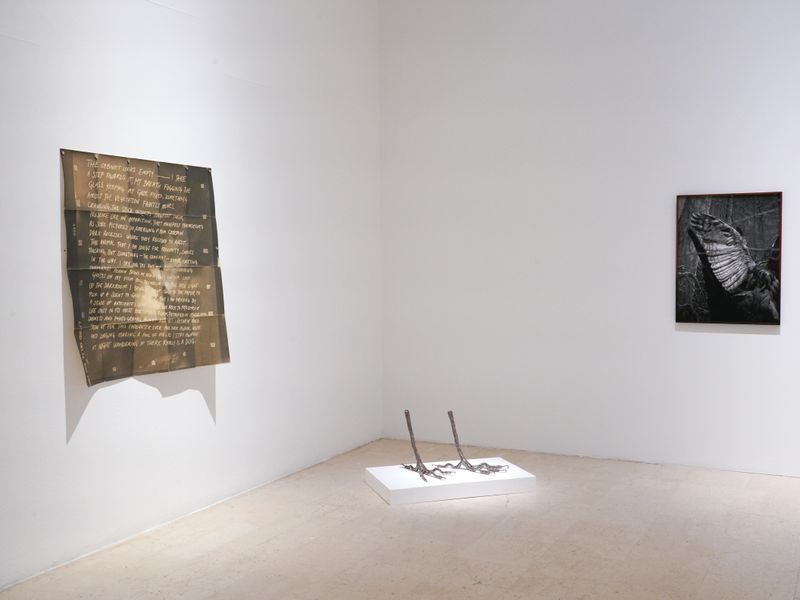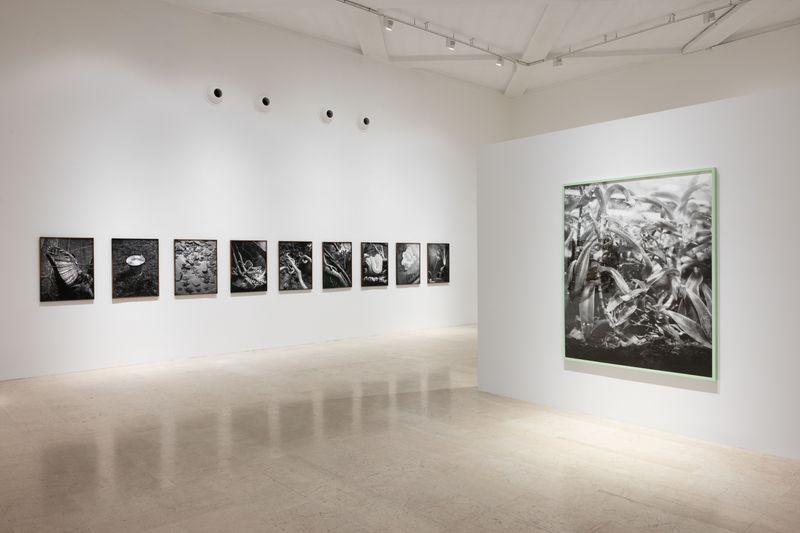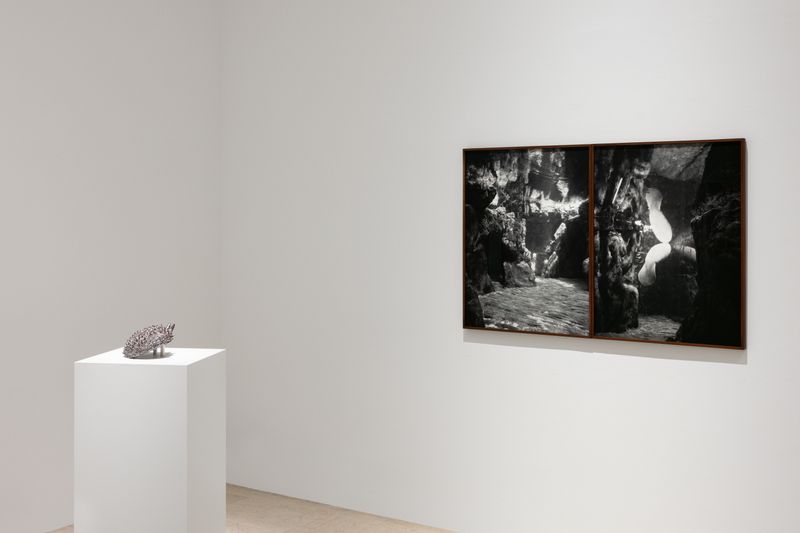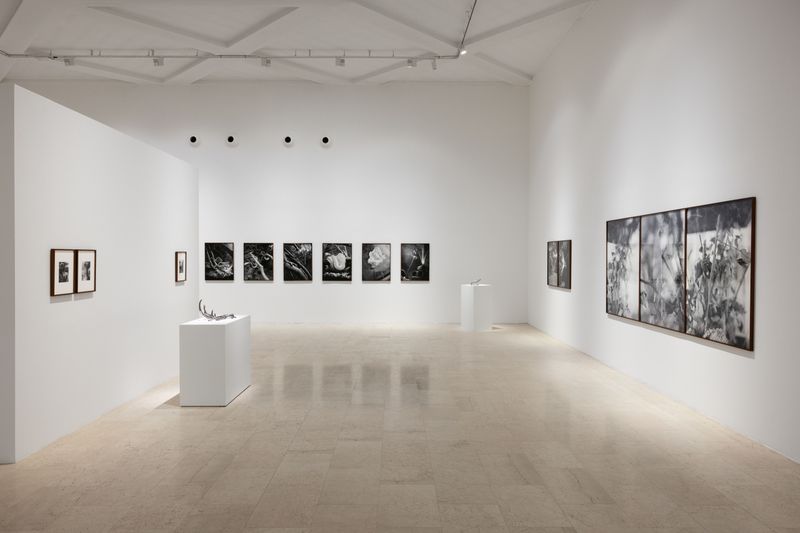All Things Laid Dormant
-
Dates2020 - 2025
-
Author
-
Recognition
All things laid dormant questions our relationship to non-human others in times of extinctions, creating a space in which to experience the dramas of encounter and recognition, moving between closeness and distance, life and death, love and longing.
The cabinet looks empty — I take a step towards it, my breath fogging the glass. Keeping my gaze fixed, something amidst the vegetation faintly moves. Crawling, the stick insects manifest their presence like an apparition, they manifest themselves as some pictures do, emerging from certain dark recesses where they receded to nest. The animal that I am longs for proximity, snouts touching, but something — the camera? — keeps getting in the way. I try and try but my earth-sharing companions remain beyond my reach, they linger like ghosts on my film roll, trembling ever so slightly in the red light of the darkroom. I bring my snout close to the photographic paper and sniffle to pick up a scent to guide me back, but I am pricked by a sense of anticipated grief — are we able to preserve life only in its most mortifying form, petrified in museum cabinets and in photographs alike? And yet I return and show up for this encounter over and over again, love and longing making a fool of me, as I stay awake at night wondering if there really is a Dog.
How can we relate to our non-human others in times of extinctions knowing, as we must, that we live among the ruination of others? Whilst living beings are bound in ecological communities of life and death, in which life constantly makes and and unmakes itself in cycles of renewal, the man-made mass destruction at play in the environmental catastrophe not only attacks the generative qualities of death, but fundamentally carries the implication that the death of animals, peoples and environments is morally irrelevant, 'collateral damage'. All things laid dormant attempts to create a space for longing, love and grief by relying on the ambiguities of the photographic medium - which both brings us into encounter and constitutes a barrier between the body and the world - to create a space in which to re-experience the dramas of encounter in a more-than-human world. And yet these encounters also embody a series of little failures: a way of being always on the verge of a contact that never quite becomes fulfilled. Moving constantly between presence and absence, life and death, proximity and distance, contact and loss of contact, love and grief, All things laid dormant would like to enter a sort of call-and-response with the world, in a world in which living beings are constantly calling and being called, coming into encounter, and bringing the self and the other into mutuality. It is a work of love.
Within All things laid dormant these encounters happen in spaces with painful and difficult histories: the zoo, the aquarium, the Natural History Museum. Existing in an ambiguous state in which it is hard to tell who is alive and who is not, who is free and who is in captivity, who is on which side of the cabinet's glass, the photographs - whilst never showing explicit violence - carry the histories of their subjects, whom have killed, captured, forcefully displaced, displayed and kept in captivity for generations of individuals. And our encounter with photography does not only carry the stories of its representational content, but always also carries the histories of the technological development of the medium itself: working with black and white film I come into contact with the histories of silver extraction and mining, as well as with the methods of extraction of gelatin, which is literally made from the skeletons of dead animals. Our encounter with photography paints a picture of ruination that goes far beyond its representational content, pointing to the depths of our interconnections and shared destinies. Reflecting on these ideas, I began learning how to extract silver from exhausted darkroom fixer in order to recycle it within the ceramic pieces that make up the sculptural part of the work, making all the creatures - photographic and sculptural - be born from the same common material. These interventions work both as a poetic, material reworking of photography's waste products, and as a way to make the fixer less polluting: once the silver is removed, it can be mixed with plant-based developer in order to break its chemical bonds and dispose of it sustainably.
All things laid dormant is also made up of two creative texts. The first, opening this text, is written by myself. The second, featured in the photobook, has been written for the work by artist/poet/performer/friend/angel lee rae walsh. The texts morph into different forms and materials from show to show: I have printed them in the darkroom and developed them in plant based developer, I have printed them on leaves through chlorophyll printing processes, and I have hand-written them on the wall with vegetal charcoal.
